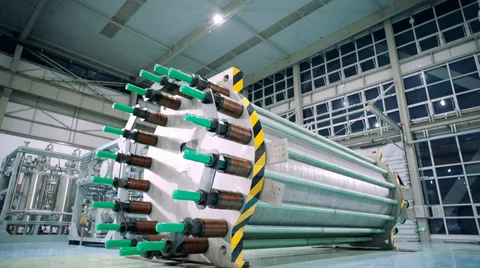How Electrolyzers Are Fueling the Energy Transition

Introduction
The Electrolyzers Market is gaining global momentum as hydrogen emerges as a cornerstone of the clean energy transition. Electrolyzers play a critical role in producing green hydrogen—hydrogen generated from renewable energy sources through water electrolysis without emitting carbon. As countries commit to net-zero carbon goals, electrolyzers are becoming essential for decarbonizing sectors such as transportation, energy, and heavy industries like steel and chemicals. The market’s growth is driven by increasing investments in renewable energy infrastructure, government incentives, and advancements in electrolysis technology that make green hydrogen more efficient and cost-effective.
Understanding the Market
Electrolyzers split water into hydrogen and oxygen using electricity. The market is classified into three main types: alkaline electrolyzers, proton exchange membrane (PEM) electrolyzers, and solid oxide electrolyzers (SOEC). Alkaline technology currently dominates due to its maturity and cost-effectiveness, while PEM and SOEC technologies are witnessing rapid growth for their efficiency and ability to integrate with renewable energy systems. Major end-use industries include power generation, mobility, refining, and chemical manufacturing. Europe and Asia-Pacific lead in green hydrogen development, driven by policy frameworks and large-scale hydrogen initiatives like the EU Hydrogen Strategy and Japan’s Green Growth Plan.
Technological Innovations
Technological advancements in the electrolyzer market are focused on improving energy efficiency, lowering operational costs, and enabling large-scale deployment. PEM electrolyzers are increasingly being adopted due to their high current density, compact design, and quick response to fluctuating renewable energy inputs. Innovations in catalyst materials, membrane durability, and stack design are reducing the cost per kilogram of hydrogen. The integration of artificial intelligence (AI) and IoT is enabling predictive maintenance, optimizing performance, and extending system lifespans. Additionally, modular and scalable electrolyzer systems are being developed to support decentralized hydrogen production for industries and remote energy applications.
Market Growth and Future Outlook
The electrolyzer market is set for exponential growth over the next decade, supported by rising demand for green hydrogen and global decarbonization policies. According to recent market trends, installed electrolyzer capacity could grow from less than 3 GW in 2023 to over 250 GW by 2035. Europe remains the largest market, followed closely by Asia-Pacific and North America, as governments introduce funding programs and carbon neutrality targets. The industrial and transportation sectors, in particular, are expected to adopt electrolyzers for hydrogen-powered fuel cells and chemical feedstock. As renewable electricity costs continue to fall, the economics of green hydrogen will become increasingly competitive with fossil-based alternatives.
Challenges and Opportunities
Despite promising growth, the electrolyzer market faces challenges such as high upfront costs, limited large-scale manufacturing capabilities, and a lack of supporting hydrogen infrastructure. However, these obstacles also present significant opportunities. Governments and private investors are pouring billions into hydrogen supply chain development, which will drive down costs through economies of scale. The development of giga-scale hydrogen projects, such as those in Saudi Arabia, Australia, and Europe, will stimulate mass adoption. Collaborations among electrolyzer manufacturers, renewable energy firms, and utilities will also accelerate the transition toward a green hydrogen economy.
Conclusion
The Electrolyzers Market is poised to play a transformative role in achieving a carbon-free future. As technologies mature and economies of scale take effect, green hydrogen will become an indispensable energy carrier across industries and regions. Electrolyzers represent not just a clean energy solution but also a strategic investment in energy independence and sustainability. Companies and governments investing in this market today are positioning themselves at the forefront of the global hydrogen revolution.
- Art
- Education et Formation
- Crafts
- Sciences et Technologies
- Economie
- Politique
- Actualité
- Littérature
- Divertissement
- Histoire
- Health
- Actualité
- Shopping & Commerce
- Music
- Agriculture & élevage
- Voyage et Evènementiel
- Beauté & esthétique
- Religion
- Festival
- Sports
- Fête
- Autres



